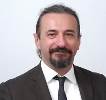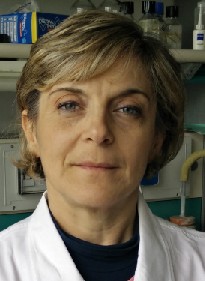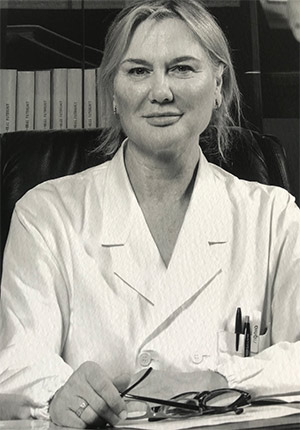Studying at the University of Verona
Here you can find information on the organisational aspects of the Programme, lecture timetables, learning activities and useful contact details for your time at the University, from enrolment to graduation.
Academic calendar
The academic calendar shows the deadlines and scheduled events that are relevant to students, teaching and technical-administrative staff of the University. Public holidays and University closures are also indicated. The academic year normally begins on 1 October each year and ends on 30 September of the following year.
Course calendar
The Academic Calendar sets out the degree programme lecture and exam timetables, as well as the relevant university closure dates..
| Period | From | To |
|---|---|---|
| Lezioni 1 Semestre CLID ROV | Oct 1, 2018 | Dec 21, 2018 |
| Lezioni 2 Semestre CLID ROV | Mar 4, 2019 | May 3, 2019 |
Exam calendar
Exam dates and rounds are managed by the relevant Medicine Teaching and Student Services Unit.
To view all the exam sessions available, please use the Exam dashboard on ESSE3.
If you forgot your login details or have problems logging in, please contact the relevant IT HelpDesk, or check the login details recovery web page.
Should you have any doubts or questions, please check the Enrollment FAQs
Academic staff
 martina.bonetti@apss.tn.it
martina.bonetti@apss.tn.it
 borghesi.a@mail.apss.tn.it
borghesi.a@mail.apss.tn.it
 elenacampanaro@libero.it
elenacampanaro@libero.it
 fulviocampolongo@gmail.com
fulviocampolongo@gmail.com
 francesca.fontana@univr.it
francesca.fontana@univr.it
 grisenti@science.unitn.it
grisenti@science.unitn.it
 renata.lazzeri@apss.tn.it
renata.lazzeri@apss.tn.it
 loredana.pancheri@univr.it
loredana.pancheri@univr.it
Study Plan
The Study Plan includes all modules, teaching and learning activities that each student will need to undertake during their time at the University.
Please select your Study Plan based on your enrollment year.
1° Year
| Modules | Credits | TAF | SSD |
|---|
2° Year activated in the A.Y. 2019/2020
| Modules | Credits | TAF | SSD |
|---|
3° Year activated in the A.Y. 2020/2021
| Modules | Credits | TAF | SSD |
|---|
| Modules | Credits | TAF | SSD |
|---|
| Modules | Credits | TAF | SSD |
|---|
| Modules | Credits | TAF | SSD |
|---|
Legend | Type of training activity (TTA)
TAF (Type of Educational Activity) All courses and activities are classified into different types of educational activities, indicated by a letter.
Morphological and functional fundamentals of life (2018/2019)
Teaching code
4S000039
Credits
6
Coordinator
Language
Italian
Also offered in courses:
- Foundations of anatomy, physiology and pathology of living organisms - ANATOMIA UMANA of the course Bachelor's degree in Psychiatric Rehabilitation Techniques
- Biomedical sciences and action of risk factors - ANATOMIA of the course Bachelor's degree in Environmental and Workplace Accident Prevention Techniques (interuniversity)
The teaching is organized as follows:
Learning outcomes
L’insegnamento si propone di fornire le conoscenze di base riguardanti l’istologia, l'anatomia e la fisiologia umana di tutti gli apparati, perché lo studente comprenda l'organizzazione e il funzionamento del corpo umano.
MODULO ANATOMIA UMANA Obiettivi formativi: Acquisire competenze di anatomia umana normale di tutti gli apparati. Acquisire la capacità di descrivere l’organizzazione strutturale del corpo umano dal livello macroscopico a quello microscopico, in condizioni di salute e di conoscere le caratteristiche morfologiche essenziali dei sistemi, degli apparati, degli organi, dell’organismo umano, nonché i loro principali correlati morfo-funzionali.
MODULO FISIOLOGIA UMANA Obiettivi formativi: Il corso di fisiologia si prefigge di fornire agli studenti le conoscenze di base per comprendere il funzionamento del corpo umano, dei suoi meccanismi omeostatici di base. Si parte riprendendo alcuni concetti di fisiologia cellulare che sono funzionali alla comprensione della comunicazione tra le cellule all’interno dei tessuti. Si passa poi alla fisiologia degli organi e degli apparati, considerandone sia gli aspetti funzionali che regolatori atti al mantenimento dell’omeostasi. Il corso si propone di fornire allo studente gli strumenti per capire e prevedere gli aggiustamenti omeostatici che servono per la sopravvivenza dell’individuo, spingendoli al ragionamento e stimolandone la curiosità.
MODULO ISTOLOGIA Obiettivi formativi: L’insegnamento di Istologia è finalizzato ad offrire allo studente un quadro chiaro e aggiornato delle cellule dell'organismo umano e della loro organizzazione morfo-funzionale nei differenti tessuti, in particolar modo del dente. Tali conoscenze sono propedeutiche ed indispensabili al prosieguo del curriculum didattico. Al termine del corso lo studente dovrà essere in grado di: 1) Riconoscere e descrivere dal punto di vista strutturale la cellula, assegnando a ciascuna componente la sua specifica funzione; 2) comprendere il concetto di differenziamento cellulare e correlare le differenze morfologiche e strutturali dei diversi tipi cellulari con le rispettive attività funzionali; 3) riconoscere e descrivere i principali tessuti dell’organismo umano, enfatizzando la comprensione del significato funzionale di ciascun aspetto morfologico osservato.
Program
------------------------
MM: ANATOMIA UMANA
------------------------
Morphological characteristics with functional correlates of: 1. Cardiovascular and lymphatic apparatuses (heart, coronary vessels, pericardium, blood vessels, lymphatic vessels, lymphoid organs) 2. Respiratory apparatus (airways and lung, pleura) 3. Urinary system (kidney, urinary tract). 4. Digestive apparatus (alimentary tract, liver, pancreas, salivary glands).
------------------------
MM: ISTOLOGIA
------------------------
1) Cytology: • Structure and function of the plasma membrane (transport, ion channels and receptors) • Structure of the nucleus, the nucleolus and nuclear membrane • Structure and function of the following cytoplasmic organelles: endoplasmic reticulum,Golgi complex, mitochondria, ribosomes, lysosomes. • Mitosis and meiosis • Notes on cell differentiation 2) Histology • epithelial tissue • cytological features • exocrine glands: classification and their cytological features • endocrine glands: cytological characters • Muscle tissue: • skeletal muscle • heart muscle • smooth muscle • Nervous tissue: • cytological characters of the neuron • myelin sheaths • the neuroglia cells • synapses • Mesenchymal tissues (connective tissues in the broadest sense): • Blood and lymph • Connective tissue: Adipose tissue • cartilage tissues: • hyaline cartilage • elastic cartilage • fibrous cartilage • Bone tissues: • Bone non-lamellar • Bone lamellar • membranous and chondral ossification • Blood Tissue and blood cells • Red blood cells • White blood cells • platelets • plasma • hematopoietic tissue 3) Tooth tissues: • Tooth Enamel • Dentin • Cement • Pulp • ligament and alveolar bone
------------------------
MM: FISIOLOGIA UMANA
------------------------
Bibliography
| Author | Title | Publishing house | Year | ISBN | Notes |
|---|---|---|---|---|---|
| Zaccheo e Pestarino | Citologia, Istologia, Anatomia Microscopica | Pearson | 2013 | ||
| Seeley | Anatomia e cenni di Anatomia Microscopica Istologia Fisiologia (Edizione 3) | Idelson-Gnocchi srl Sorbona, Napoli | 2014 | ||
| Adamo S, Carinci M, Molinaro P, Siracusa GS, Stefanini M, Ziparo E | Istologia di V. Monesi (Edizione 5) | Piccin, Padova | 2002 | ||
| Anthony L. Mescher | Junqueira Istologia Testo e Atlante, VI Edizione Italiana a cura di Ubaldo Armato, Anna Chiarini, Ilaria Pierpaola Dal Prà, Raffaella Pacchiana. (Edizione 6) | PICCIN | 2012 | 978-88299-2166-9 |
Examination Methods
------------------------
MM: ANATOMIA UMANA
------------------------
Multiple choice questions. Five answers, one correct. Correct answer, 1 point; wrong/missing answer, 0 points.
------------------------
MM: ISTOLOGIA
------------------------
The exam is written and includes the use of multiple choice questions (5 replies to each question of which only one is correct). The questions are 20 For each correct question it is assigned a point and there are no penalties for wrong answer. Half of correct questions determines sufficiency. In case of doubt in the preparation of the candidate, the teacher can convoke the student and check his preparation orally
------------------------
MM: FISIOLOGIA UMANA
------------------------
Career prospects
Module/Programme news
News for students
There you will find information, resources and services useful during your time at the University (Student’s exam record, your study plan on ESSE3, Distance Learning courses, university email account, office forms, administrative procedures, etc.). You can log into MyUnivr with your GIA login details: only in this way will you be able to receive notification of all the notices from your teachers and your secretariat via email and soon also via the Univr app.
Gestione carriere
Orario Lezioni
Documents
| Title | Info File |
|---|---|
|
|
pdf, it, 459 KB, 22/09/23 |
|
|
pdf, it, 513 KB, 26/01/24 |
|
|
pdf, it, 498 KB, 23/02/24 |
|
|
pdf, it, 478 KB, 26/01/24 |
|
|
pdf, it, 1228 KB, 25/01/23 |
|
|
pdf, it, 1453 KB, 07/02/24 |
Graduation
Documents
| Title | Info File |
|---|---|
|
|
pdf, it, 714 KB, 13/11/23 |
Student login and resources
in questa sede verranno pubblicati i calendari delle lezioni
 0461-364187 364174 o 0464 582475
0461-364187 364174 o 0464 582475

















